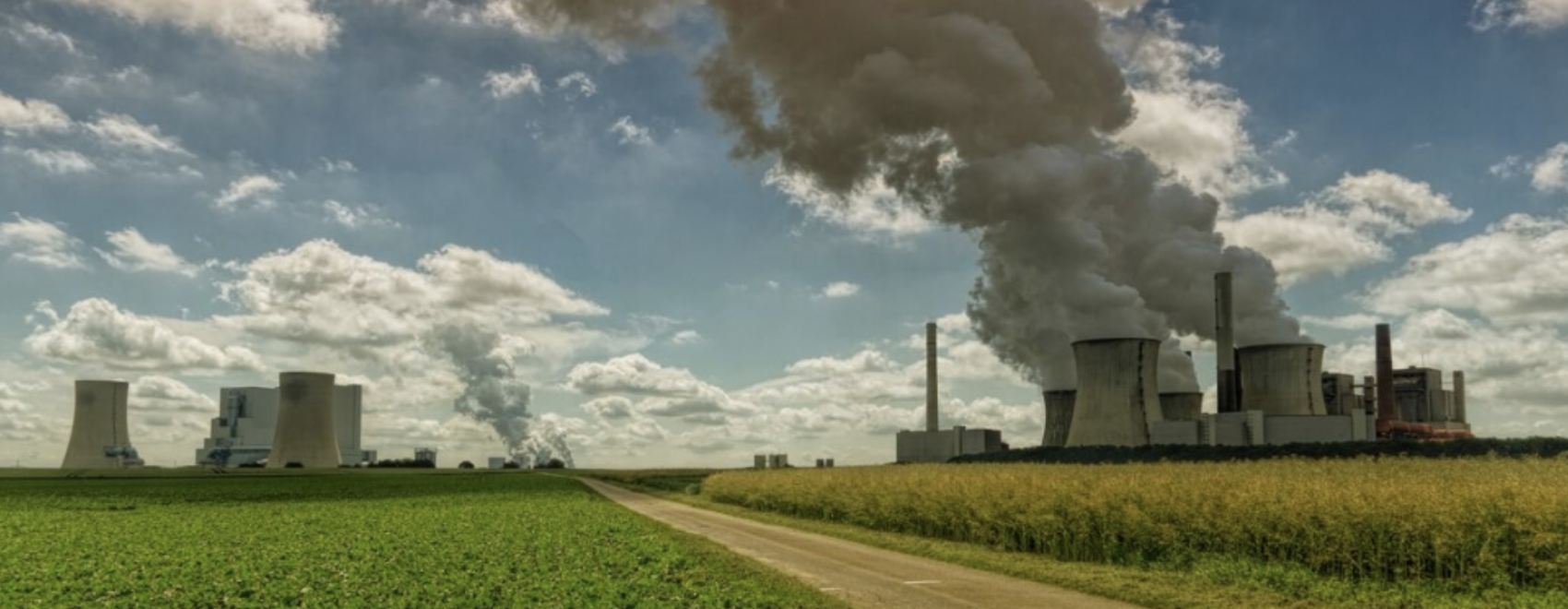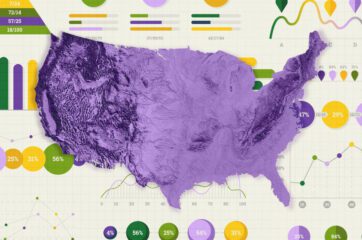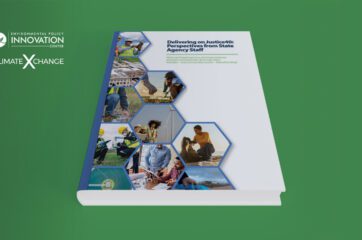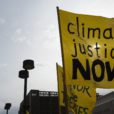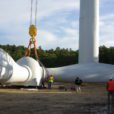Introduction
Economists conventionally describe carbon taxes as the most efficient policy tool for curbing greenhouse emissions—with the added benefit of raising government revenue. Political and technocratic elites have recently followed suit in support of the carbon tax with the creation of the bipartisan Climate Leadership Council[1], which includes among its founding members former Federal Reserve chairs Ben Bernanke and Janet Yellen. More broadly, economists seem fairly uniform in their support for such taxes at the federal level, and in their rejection of other regulatory changes that aim for the same purpose.

The general public also shows increasing support for carbon taxes: 50% of Americans in a 2016 survey say they support reducing greenhouse gas by taxing carbon-based fuels[2], while 68% of Americans in a 2018 survey say they support requiring fossil fuel companies to pay a carbon tax[3].
However, a comprehensive carbon tax has yet to be adopted in the United States (see David Karol’s new book[4] on this). Polarization—the increasing ideological separation between the parties—makes the adoption of carbon taxes at the federal level particularly difficult. This is especially so given institutions like bicameralism and supermajoritarian rules needed to overcome Senate filibusters and presidential vetoes.
At the same time, there is currently a surge of carbon tax policies proposed in state legislatures and ballot initiatives across the country. Unlike the federal government, states are far more ideologically homogeneous. There is a far greater likelihood of unified government, where the bicameral legislature and the governor come from the same party. There are far fewer supermajoritarian rules to pass legislation. And there is direct democracy—the ability of citizens to vote directly on laws that legislatures might otherwise avoid.
Can a carbon tax pass at the state level? Who would support it? Does support depend on how the revenue generated by a carbon tax will be spent (“recycled”)?
In our new working paper[5], “Can Pigou at the Polls Stop US Melting the Poles?”, we leverage the unique experience of Washington State to answer these questions. Washington State is the first U.S. state to hold a popular vote on the carbon tax, offering novel insights into the American electorate’s support for a carbon tax. We also show that there are substantial limitations when using survey data to predict real-world voting behavior.
The Carbon Tax Is Still a Liberal Thing
Washington State is one of the most liberal U.S. states—the 10th highest vote share for Hillary Clinton in the 2016 presidential election—and therefore fertile ground for climate policy. In 2016, Washington State put to the ballot initiative I-732—the first carbon tax initiative in the United States. The initiative lost with 40.8% of voters saying yes.
After the defeat of this initiative, Washington followed in 2018 with initiative I-1631, which also lost with 43.4% of voters saying yes. Both initiatives would have taxed fossil-fuel emissions, starting at $15 per ton of carbon dioxide and subsequently rising. I-731 and I-1631 differ substantially in revenue recycling, with I-731 being designed to be revenue-neutral so as not to increase the total tax burden, while I-1631 had no such objective. Specifically, I-731 would have lowered the state sales tax rate from 6.5% to 5.5%, and matched the federal Earned Income Tax Credit [6] by 25%, while I-1631 would have devoted 95% of the revenue to green spending—specifically, projects and programs promoting clean energy, healthy forests, and improved air and water quality.
The I-732 bill is a revenue-neutral bill similar to what is advocated by the bipartisan Climate Leadership Council. The hope was that I-732 would attract moderate Republicans and seal the deal for carbon taxes. However, many progressives in Washington State would have preferred the revenue from the carbon tax to be spent on green projects rather than used to lower other taxes. Therefore, when I-732 failed at the polls, I-1631 was a natural follow-up designed to increase support among liberals by spending on green projects.

The above figure shows that the 2018 initiative garnered more votes overall by increasing the vote share among Washington State’s most liberal precincts relative to the 2016 initiative. Compared to the 2016 initiative, the 2018 initiative gained 3.4 percentage points in the more liberal precincts (deciles 5-10), while losing 0.7 percentage points in the more conservative precincts (deciles-1-4).
Therefore, the tepid increase in overall support for I-1631 relative to I-732 can be explained mainly by insufficient additional enthusiasm among progressives, rather than increased opposition among conservatives. Going liberal with the revenue recycling gained votes but not nearly enough to win.
Did the initiative fail because voters care more about their pocketbooks than ideology? Not so much. Vote shares are lower in precincts with longer car commutes and larger homes, suggesting that voters do worry some about higher gas prices and home heating bills. But pocketbook issues are dwarfed by ideology in explaining the vote.
Ideology is best conceived as a set of interrelated policy preferences. Empirically, those relationships are very strong, and mostly one-dimensional. The commonplace liberal-conservative continuum turns out to be just right. Partisanship, on the other hand, is best thought of as an identification or affinity for a particular political party. That need not imply preferences for government policy. For example, a liberal Republican might support abortion rights, but still vote for Donald Trump. A conservative Democrat might support lower taxes, but still vote for Joe Biden. Ideology can best account for voting in Washington State. Specifically, ideology as measured by votes on other ballot initiatives (e.g., a higher minimum wage and stricter gun safety regulations) predicts support for a carbon tax even better than the Democratic presidential vote share: this ideology measure can explain more than 90% of the carbon tax votes across precincts in Washington state. People support the carbon tax mostly because it accords with their world views.
The Chance of a Carbon Tax in Another State
Given that these two carbon tax initiatives failed to pass in Washington State, what is the prospect for such proposals in other states? A statistical model can be used to extrapolate votes on the carbon tax from Washington State to other states based on these other states’ demographic and other characteristics, most importantly their partisanship[7].
The figure below shows the predicted vote share for the 2016 initiative (in hollow circles) and the 2018 initiative (in full circles). The black circles and labels represent states that do have a popular initiative process, while the gray circles and labels represent states that lack a popular initiative—rendering moot their predicted vote share. Since ideology is the main predictor of voting, support for a carbon tax tends to be higher in more Democratic states.
Our extrapolation shows that the best hope for a Washington-style carbon tax in a different state would be the 2018 initiative in Massachusetts, where the predicted vote share is over 49%. In Vermont, the predicted vote share for the 2018 initiative exceeds 50%—but Vermont lacks a popular initiative process. Thus, while no other state would have passed the carbon tax, Massachusetts would have been the best candidate.
After Massachusetts, the best hope for a carbon is California. It also has the popular initiative and in 2018 voted down an initiative that would have repealed a 2017 gas tax increase. While California’s gas prices are already the highest in the country, our analysis shows that pocketbook concerns are far less important than ideology.

How Surveys Overstate Voter Support
In addition to studying actual voting data from Washington, we conducted a survey using the Amazon Mechanical Turk platform on the evening before and the day of Election Day in November 2018 (prior to results being announced). All respondents are U.S. residents age 18 and older. We collected about 4,000 responses. Our main question of interest replicates the language from the 2018 carbon tax initiative in Washington State (I-1631).
The survey is of course not representative of the U.S. population, since it is based on voluntary online responses. Respondents on Amazon Mechanical Turk are typically younger, more educated, more likely to be Democratic, and more liberal than the general population. To make the data representative of the general population, we use a variety of statistical adjustments. Essentially, we use other representative datasets to measure, say, the share of people who are age 18-29 or that self-identify as Democrats in each state. If our survey has a higher share of young, self-identified Democrats than in the representative dataset, we down-weight such respondents in our survey. After these statistical adjustments, our survey is able to predict actual House votes at a very high level of precision.
Our weighted survey confirms that support for the carbon tax is driven by ideology, much more so than say partisanship: ideology explains almost twice as much of the variation in votes across people than partisanship does. As we have already demonstrated, ideology explains votes for a carbon tax across Washington State precincts. In addition, ideology explains support for a carbon tax across individuals over the whole of the United States.
Why are the predicted votes for a carbon tax based on the actual vote in Washington State less than 50%—even in liberal states—when national surveys show much higher support? Our survey offers a better understanding of this discrepancy. The survey estimate for the carbon tax vote in Washington is much higher than the actual vote share. Even after we reweight our respondents to make them representative, the survey predicts 66% support for the 2018 carbon tax initiative, while the actual vote share was just 43%. This result shows that while House votes can be safely predicted with adjusted surveys, carbon tax votes are easily over-estimated. Therefore, there are likely unobserved characteristics of our survey respondents that lead them to support a carbon tax, while they do not lead them to vote more for Democrats. In a nutshell, the survey overestimated the vote for the carbon tax in Washington, which leads us to being cautious about pre-election polls on carbon tax initiatives.
There is another issue with surveys: asking people about a hypothetical carbon tax is not the same as voting on a real carbon tax with real-world implications. This fact is clearly demonstrated in our survey. Indeed, support for a carbon tax is 20 percentage points lower in Washington State than in other states, after controlling for ideology and demographic determinants of support.
This result strongly suggests that campaigns matter: people in Washington State were exposed to the 2016 and 2018 campaigns around the carbon tax and they ended up taking a more negative view of the carbon tax than other similar Americans. Importantly, people in Washington State do not take a more negative view of other environmental policies than similar people in other states. Rather, their lack of enthusiasm pertains specifically to the 2018 carbon tax initiative. This result further supports the argument that specific campaigns on the carbon tax matter in shaping voters’ opinion.
Overall, our results tell a cautionary tale about the accuracy of surveys in predicting the level of support for a carbon tax initiative. Surveys can overestimate the support for the carbon tax in cases where the carbon tax is actually on the ballot: pre-election polls are therefore likely to be over-optimistic. Second, surveys can overestimate voter support for a carbon tax initiative that is merely hypothetical: being exposed to a campaign around the carbon tax can lower voters’ support by as much as 20 percentage points.
Liberals, Youth, and Future Legislation?
What are the implications of Washington State’s experience for future carbon tax initiatives? Given that the carbon tax lost in one of the most liberal states, carbon tax initiatives will likely be difficult to pass in other states as well. But our research also offers lessons about elements that make the passage of a carbon tax more likely at the state level.
First, how you spend the money raised by the carbon tax (“revenue recycling”) matters. Conservatives prefer revenue-neutral recycling, i.e. lowering taxes or returning the money to people as dividends. Liberals prefer green spending. Therefore, a revenue-neutral carbon tax would likely do better in more conservative states and a green spending carbon tax would likely do better in more liberal states. However, only the most liberal states are close to passing a carbon tax. For those states, spending the carbon tax revenue on green projects may be the most popular option.
Second, campaigns really matter. We find that the support for a carbon tax is much lower in Washington State than in other states, suggesting that the two campaigns had an overall negative effect on voters’ support for a carbon tax. Our research does not allow us to say what specific elements of the campaigns led to voters’ negative views of the carbon tax. It could be that voters simply learn that they do not like the carbon tax, or it could be that they are subject to persuasion by the “no” campaign. Indeed, the spending for the “no” increased dramatically between Washington’s 2016 and 2018 carbon tax initiatives. In 2016, total spending for and against I-732 was modest: supporters spent $3.2 million, while opponents spent just $1.4 million.
In 2018, total spending on I-1632 was many times larger: supporters spent $16.4 million (a five-fold increase), while opponents spent $31.6 million (a twenty-fold increase). Overall, our results suggest that future carbon tax initiatives must pay great attention to the campaign. In a liberal state, motivating moderately liberal voters would likely pay off the most. Thus, it may be a fruitful idea to link the carbon tax to other popular liberal ideas, just like the Green New Deal packages environmental policy with multiple liberal ideas.
Third, age matters. We find that young voters are more likely to vote in favor of a carbon tax. This finding is consistent with surveys showing that young people are more likely to agree that there is solid evidence for global warming, even among Republicans[8]. To the extent that these facts represent a permanent generational shift, it is likely that carbon taxes will become more popular when those who are currently young comprise a greater share of the electorate.
Finally, the Washington experience suggests real limits on direct democracy as a strategy to enact carbon taxes, whether the revenue recycling appeals to moderates and conservatives (I-732) or to progressives (I-1631). An alternative political strategy that remains available for use in all 50 states is plain old legislation. We know that states enact policies that are not necessarily supported by majorities all the time (see, for example, Lax and Phillips 2011[9]). While it may be difficult to imagine conservative states doing so, it is not so difficult to see how a liberal state—or, even better, a coalition of liberal states—with unified Democratic control like California, Hawaii, Washington, or New York might legislatively enact carbon taxes.
Conclusion
While the carbon tax has the favor of economists and policy elites, American voters are not yet ready to jump on the bandwagon. Carbon taxes remain a highly ideological and polarizing issue. Given that carbon taxes are most popular in liberal states, a liberal-friendly version of the carbon tax likely has the greatest chance of passing at the state level. In the longer run, generational changes may propel support for carbon taxes as young voters are more likely to support the policy.
________

